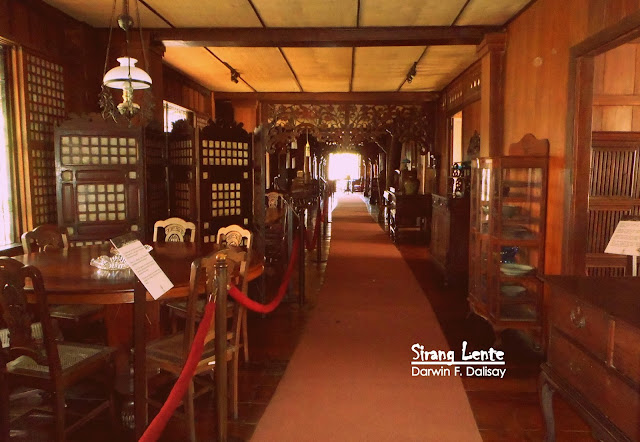The Casa Gorordo Museum, also a house, shows how a prominent family lived during their generations. From the floor, artistic walls, windows, rooftop, toilets, etc. - all parts are really gorgeous. At the main entrance of this house, its historical background was written and here's what it says: "This house was built in the mid-19th century by Alejandro Reynes y Rosales and was bought by Juan Isidro de Gorordo, a Spanish merchant, in 1863. Four generations of the family lived in this house, including the first Filipino Bishop of Cebu, 1910-1932.

This house was acquired in 1980 by the Ramon Aboitiz Foundation Inc. It was restored and later opened as a public Museum. It was also declared a National Historical Landmark by the Virtue of National Historical Institute Board Resolution No. 4, dated September 24, 1991." - info courtesy of the museum.

The guest room features a four-post bed with a canopy, an old aparador (closet), an armario (pillow rack) and lavador with a porcelain basin. The guest room was rarely unoccupied as, like other Filipino families, the Gorordos regularly hosted friends and relatives. - courtesy of the museum.


This is a reconstruction of a traditional Cebuano kitchen that was used by the family household. Typically, the kitchen was located in a separate hut because of the smoke it produced and as a precaution against fire. Objects found in this house include ceramics, wooden utensils, glassware and cooking implements from the 1800s and the early 1900s. Other interesting features are the earth-paved stove or abuhan, the food cabinet or paminggalan and the dish dryer or banggera extending from the window. - information courtesy of the museum


The azotea of Casa Gorordo served many purposes. In the daytime, it was used for washing, drying and ironing clothes. The cool breeze in the late afternoons and evenings made it an ideal place for relaxation, meriendas and intimate gatherings for friends and family. The large martavan jars are both functional and decorative. They are constantly filled with water to cool the breeze that enters the windows. The whole terrace is shaded by two flowering vines; the yellow bells and the bridal bouquet, the latter being almost as old as the house. - information courtesy of the museum.

